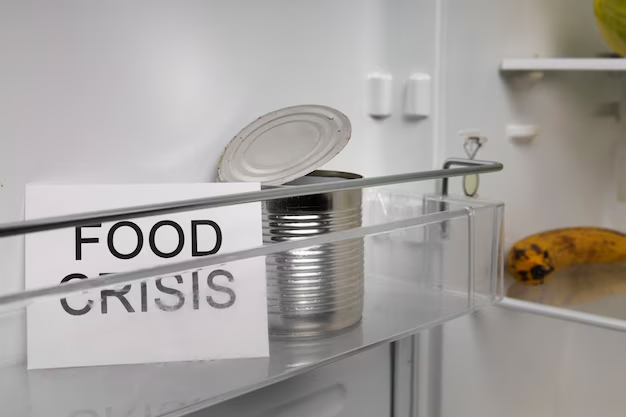How Long Does Your Food Really Last in the Fridge?
Opening the refrigerator is like flipping through a chapter of your life's culinary habits. Whether it's leftovers from last night's dinner, fresh produce waiting to be cooked, or those lunch meats you bought for your meals, each item in your fridge tells a story about your diet and lifestyle. But how long is too long when it comes to storing food? Refrigeration slows the spoilage process, but understanding precisely how long your food stays fresh can safeguard your health and prevent waste. Here, we delve into the lifespan of common refrigerated items, ensuring you know when to keep, use, or toss them.
The Basics of Food Storage
Understanding Shelf Life
The term shelf life refers to how long food retains its safety and quality during storage. This period varies based on several factors, including the type of food, packaging, and storage method. In the case of refrigeration, cooler temperatures slow down bacterial growth, extending the shelf life of many perishable foods.
The Importance of Temperature Control
One of the critical factors in maximizing shelf life is maintaining a consistent refrigerator temperature. Ideally, your fridge should be set at or below 40°F (4°C). This setting ensures that bacteria that cause foodborne illnesses, such as Salmonella and E. coli, grow more slowly. Monitoring with a reliable thermometer can be a proactive way to maintain appropriate temperatures.
Lifespan of Common Refrigerated Foods
Dairy Products: When to Enjoy the Creamy Goodness
Milk and cream products generally last 5 to 7 days past their "sell by" date when stored properly. Pay attention to changes in smell or texture as indicators of spoilage. Yogurt tends to have a longer shelf life, often lasting 1 to 2 weeks past its expiration date if unopened.
Cheese varies significantly, with softer cheeses such as Brie staying fresh for about a week, while hard cheeses like Cheddar may remain good for up to 6 weeks. Keep cheese tightly wrapped to prevent mold and flavor absorption from other foods.
Meat and Poultry: Ensuring Safety and Freshness
For raw poultry, whether it's chicken or turkey, a safe guideline is 1 to 2 days in the fridge. Ground meats like beef or pork also fall into this range. On the other hand, cooked meats can last up to 4 days. Always store meats in their original packaging or airtight containers to avoid cross-contamination.
Cold cuts and deli meats can be stored for 3 to 5 days after opening. Packaged hot dogs last about a week once opened.
Seafood: Handling With Care
Fresh fish and shellfish have a very short refrigerator life, typically lasting only a day or two. It's advisable to consume these items as soon as possible to ensure freshness and prevent spoilage.
Fruits and Vegetables: Keeping It Crisp
Leafy greens such as lettuce or spinach can last up to a week, while hardy vegetables like broccoli and carrots may remain fresh for 10 to 14 days. Fruits like apples and berries, if unwashed, can last about a week, but it's best to consume them sooner for peak flavor and nutrition.
Eggs and Condiments: Longevity Simplified
Eggs are quite durable, lasting up to three weeks after purchase if stored in their original carton. Butter and margarine also enjoy a longer shelf life, typically staying fresh for 1-2 months.
Condiments such as mustard and ketchup can last six months to a year due to preservatives, as long as they're stored properly.
Key Tips for Extending Food Freshness
Store Smartly
Organize your refrigerator to allow cold air to circulate around food items. Don’t overpack, and keep a clean fridge to prevent cross-contamination.
Practice First-In-First-Out (FIFO)
This method involves using older food items before newer ones to minimize the risk of spoilage.
Consistent Labeling
Use simple labels with dates when storing leftovers or repackaging bulk items to ensure timely consumption.
Visual Storage Chart
| Food Type | Storage Duration |
|---|---|
| Milk | 5-7 days past "sell by" date |
| Yogurt | 1-2 weeks past expiration if unopened |
| Cheese - Soft | 1 week |
| Cheese - Hard | Up to 6 weeks |
| Raw Chicken/Poultry | 1-2 days |
| Cooked Meats | Up to 4 days |
| Fresh Fish | 1-2 days |
| Leafy Greens | Up to 1 week |
| Eggs | Up to 3 weeks |
| Condiments | 6-12 months |
Recognizing Spoilage Signs
Spoiled food often shows visible signs such as mold, discoloration, or off smells. Always trust your senses—if in doubt, it's safer to bin it than risk consuming unsafe food.
Concluding Insight: Smarter Food Storage for a Safer Kitchen
Your refrigerator is a tool for keeping food fresh and safe. By understanding the recommended storage times and signs of spoilage, you minimize waste, protect your health, and make your kitchen more efficient. Taking these small steps in proper food storage not only keeps your meals tasty and nutritious but also lets you make the most of your grocery trips. Embrace these practices, and let them guide you to fresher, healthier food choices every day. 🌿🥗
